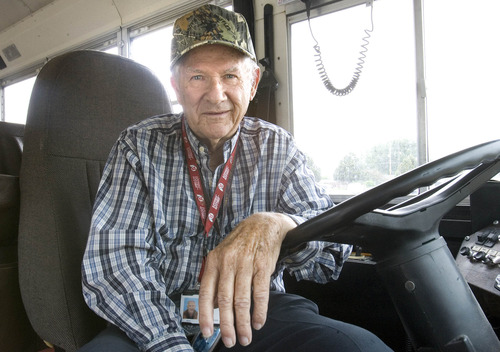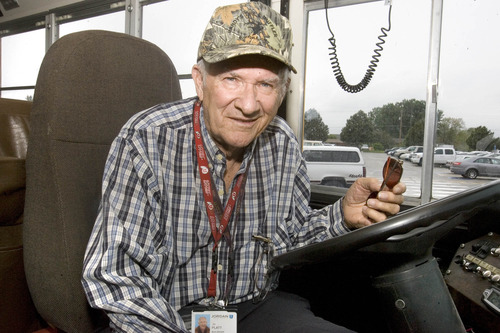This is an archived article that was published on sltrib.com in 2013, and information in the article may be outdated. It is provided only for personal research purposes and may not be reprinted.
While some Utahns can easily spend $4 a day on a latte or frappucino, others must stretch those four bucks to fund their entire daily food intake.
The average food-stamp benefit is $4 per day, and on Monday the SNAP Challenge kicks off in participating areas around the United States, including Utah where the advocacy organization Utahns Against Hunger is hosting the week-long effort.
SNAP stands for the federally funded Supplemental Nutrition Assistance Program. On its website, Utahns Against Hunger, says that while SNAP makes a difference for millions of Americans, the benefits are "too low to allow families to purchase enough nutritious food and to feed their families healthy meals on a consistent basis."
James "JW" Platt, a Riverton widower, said he voluntarily chooses to eat on about $3 per day, about $1 less than the average daily food-stamp ration.
At 80, Platt is spry. The former police officer, state lawmaker and occasional actor — he played a bit part in "Revenge of the Ninja" — now drives a school bus for the Jordan School District.
Platt starts his day with cooked cereal at 5 a.m., has a bowl of mid-morning cornflakes, eats a 99-cent can of soup for lunch, then ends with supper consisting of a 10 for $10 frozen dinner and two slices of bread. In between, he snacks on fresh fruit and vegetables as his budget allows.
"One day a week, I'll scramble up eggs and throw in a chunk of sharp cheddar," Platt said. On a fancy day, he adds a banana to his cereal.
Living on such a tight food budget means forgoing many food items.
"For a family, it would be extremely challenging. I don't have to exert the energy that younger people do," Platt said of his minimal diet. "Some days it's uncomfortable — you want something else. But the sun is going to come regardless."
Jon Pierpont, who heads up Utah's Department of Workforce Services, is among those taking the SNAP Challenge. He will speak about his experience during a May 28 free screening of "A Place at the Table," a documentary about food insecurity in the United States.
"As the director of the department that administers this assistance, it is very important to me to understand what it's like for families who participate in SNAP," Pierpont said.
Recent DWS data showed that of 15,107 able-bodied adults without dependents who enrolled in Utah's food stamp program between October and April, more than 9,000 were dropped due to non-participation in the required meetings with employment counselors, job searches, training and volunteer work.
These numbers disturb Bill Tibbitts, who directs the Anti-Hunger Advocacy Project for the nonprofit Crossroads Urban Center in downtown Salt Lake City. Crossroads operates an emergency food pantry and thrift store.
"We serve between 150 to 200 households per day," Tibbitts said, noting that a recent client survey revealed that 56 percent were food stamp recipients whose allotment failed to stretch through the end of the month. Clients can only access the Crossroads food pantry six times in a year, Tibbitts added.
As part of welfare reform in 1996, rules were imposed on SNAP recipients that were later suspended during the recession. Those constraints could have been waived one more year, Tibbitts said, but Congress chose to reimpose those restrictions last October.
"It is a real shame that thousands were cut off the program," Tibbitts said, "when we could have helped them get through the end of a difficult economic period. Economists say the recession has ended, but the good news at the top hasn't necessarily trickled down to the people at the bottom."
twitter: @catmck —
Free documentary screening
"A Place at the Table" will show Tuesday, May 28, at 7:30 p.m. at the Broadway Centre Theater, 111 E. Broadway (300 South) in Salt Lake City. Described as engaging and enraging, the film zooms in on the struggles of three individuals who are among the 50 million people in the U.S. who don't know where their next meal is coming from.
Source: Utahns Against Hunger







